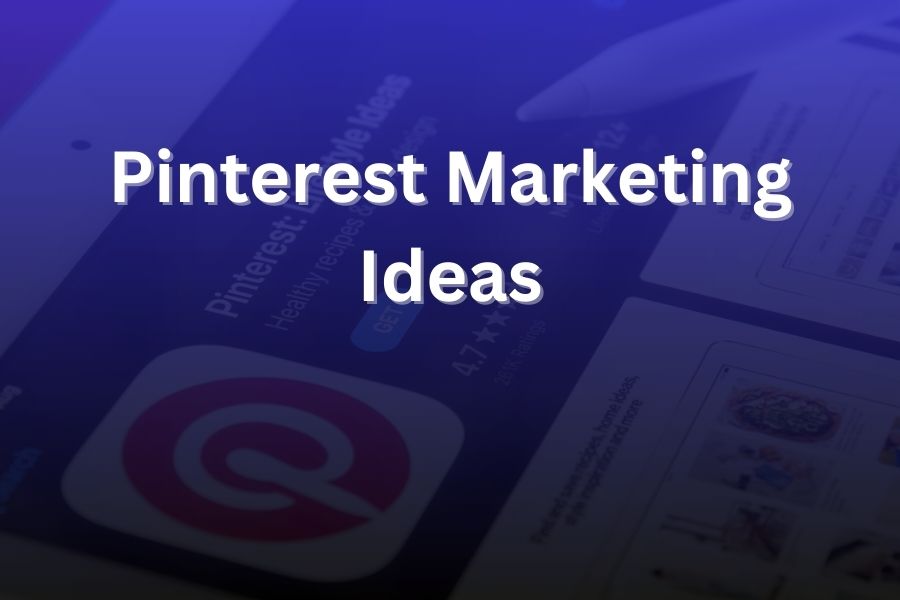Pinterest Marketing Ideas: Smart Strategies for Brand Growth

Are you ready to use Pinterest to increase your brand exposure, drive traffic to your website, and boost conversions? With careful planning and smart execution you can make Pinterest a reliable source of new business.
In this article you will learn how to optimise your profile, carry out keyword research, design high-impact pins, plan seasonal content, use paid features, integrate across channels, analyse performance and avoid common mistakes.
Optimise your Pinterest profile for maximum reach
Your first step is to treat Pinterest as a search engine rather than just another social channel. Start by switching to a Business account so you gain access to analytics and ad tools. Use a clear brand logo or recognizable image for your profile picture. Write a concise bio that includes your primary keyword and explains what you offer. Claim your website so Pinterest recognises your domain, which improves reach and credibility.
Next organise your boards around specific themes tied to your audience’s interests, and write keyword-rich descriptions for each board. This helps with both Pinterest and Google searches. Make sure your profile, board names, descriptions, and pins all speak the same brand voice and keyword strategy.
Conduct keyword research and search optimisation
Treat your Pinterest account like you would an SEO campaign. Use Pinterest’s search bar to find autocomplete suggestions that show what users are actually searching for. Focus on generic keywords rather than brand names, because most Pinterest searches do not include brands. For example, instead of your brand name you might use “eco friendly skincare routine” or “minimalist home decor ideas”.
Apply these keywords to board titles, descriptions, pin titles, pin descriptions, and even image file names. Use one primary keyword per pin and support it with 2-3 related keywords or hashtags. That way you give Pinterest multiple signals about what your content covers and improve your visibility in search results.
Create compelling pins that convert
A well designed pin stands out in the feed and drives action. Use vertical format images (for example 1000×1500 px or 2:3 ratio) so your pins stand tall and get noticed. Overlay bold text indicating a benefit or solved problem like “5 Kitchen Hacks for Busy Families”. Use high quality photography or flat-lay visuals that reflect your brand style. Include a call to action: “Save this for later” or “Click to learn more”.
Don’t rely on only one graphic per idea. Create multiple versions of a pin with different visuals, titles or colour schemes so you can test what resonates. Best performing formats often include how-to guides, list style graphics, before-and-after visuals, and infographics. Repurpose your existing blog posts, product images or newsletter content into pin-friendly formats to get more value from what you already have.
Plan boards and tap into seasonal trends
Organise your boards into strategic themes that align with your business and your audience. For example have boards like “Healthy Weeknight Meals”, “Minimalist Home Decor”, or “Summer Travel Tips”. Also build boards around upcoming seasonal or event-driven search trends such as “Holiday Gift Ideas 2025” or “Back to School Meal Prep”.
Plan ahead because on Pinterest users often begin saving ideas weeks or months before major events. Building a seasonal board early helps you capture planning-phase traffic. Mix your own content with curated repins from relevant creators. This practice signals to Pinterest that your board is a useful destination, not just self-promotion.
Use paid features and advanced formats to scale
While organic strategy builds your foundation, paid features allow you to accelerate growth. Promoted Pins let you target based on keywords, interests and behaviours. Product Pins include extra metadata like price and availability, increasing conversion potential for ecommerce brands.
Run campaigns that test multiple creatives so you can identify your best performing visuals and titles. Use the Pinterest tag or catalog integration to track conversions and feed data back into Pinterest’s optimisation engine. This strategy helps you target high-intent users and drive meaningful results rather than just clicks.
Integrate Pinterest strategy across other channels
Your Pinterest marketing should not live in isolation. Promote your best pins in your email newsletters, blog posts, Facebook and Instagram channels. Embed pins on your website and include calls to action such as “Save this to your board”.
If you have an online store, sync your product catalogue and use retargeting to reach users who visited your site but didn’t purchase. Use insights from Pinterest to inform your overall marketing funnel so you maintain consistency and reinforce your brand across platforms.
Track analytics and refine your approach
Set a regular schedule to review your Pinterest performance. Key metrics you should monitor include impressions, saves, link clicks to your website and conversion rate from Pinterest referrals. Identify your top performing pins, boards and keywords. Reverse engineer what is working and replicate.
If a board or pin performs poorly, review its title, description, visuals and keyword structure. Use scheduling tools to publish pins when your US audience is most active—often evenings and weekends show higher engagement. Maintain consistency: frequent pinning and refreshed visuals outperform one-off bursts.
Creative ideas you can implement right away
• Create a pin showing your product being used in a real life scenario and include a strong call to action.
• Turn a blog post into a Pinterest carousel breaking it into multiple pins each linking back to your article.
• Build a seasonal board for an upcoming event such as “Mother’s Day Gift Ideas 2026” and populate it with both your content and curated ideas.
• Design three different pin versions for the same content—vary titles, visuals and colour palettes—and run them over a week to test performance.
• Develop tutorial style pins with step-by-step instructions that link back to your site or resource.
Common mistakes and how to avoid them
Using generic stock images without brand identity makes your pins less memorable and reduces trust. Use on-brand visuals and text overlays that clearly communicate your message.
Neglecting keywords in board titles, pin descriptions or account bio limits your visibility. Treat each element of your profile as a chance to be found.
Posting inconsistently or in bursts followed by silence erodes algorithmic favour. Establish a regular pinning cadence and refresh your top content.
Ignoring analytics means you miss opportunities to improve. Use data to guide what works and what doesn’t rather than relying on guesswork.
How to scale your Pinterest marketing for long term success
Once your strategy shows traction, you can scale your efforts by building a library of pin templates that speed up production. Outsource pin creation and scheduling so you publish 10-20 pins per week rather than a handful.
Experiment with video pins or idea pins as Pinterest invests in richer media formats and users engage with them more. Leverage Pinterest’s audience insights to extend into related interests and target new segments. Collaborate with influencers or guest board curators to tap into fresh audiences and build your profile authority.
Final thoughts
When you consistently treat Pinterest as a strategic marketing channel you build an asset rather than a campaign. Your board authority grows, your pin library builds, and you gain compounding visibility over time.
With strong keyword research, compelling visuals, smart seasonal planning, paid amplification, cross-channel integration and analytics-led refinement you position your brand for meaningful growth. Implement these ideas with focus and consistency and Pinterest can become one of your most effective channels for traffic, leads and conversions in the U.S. market.
